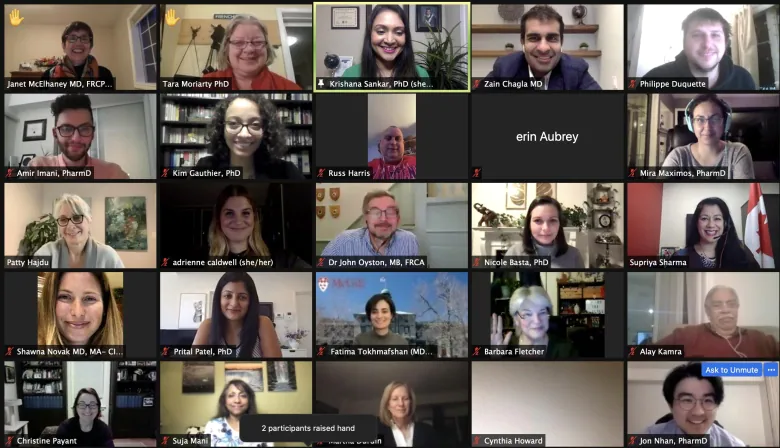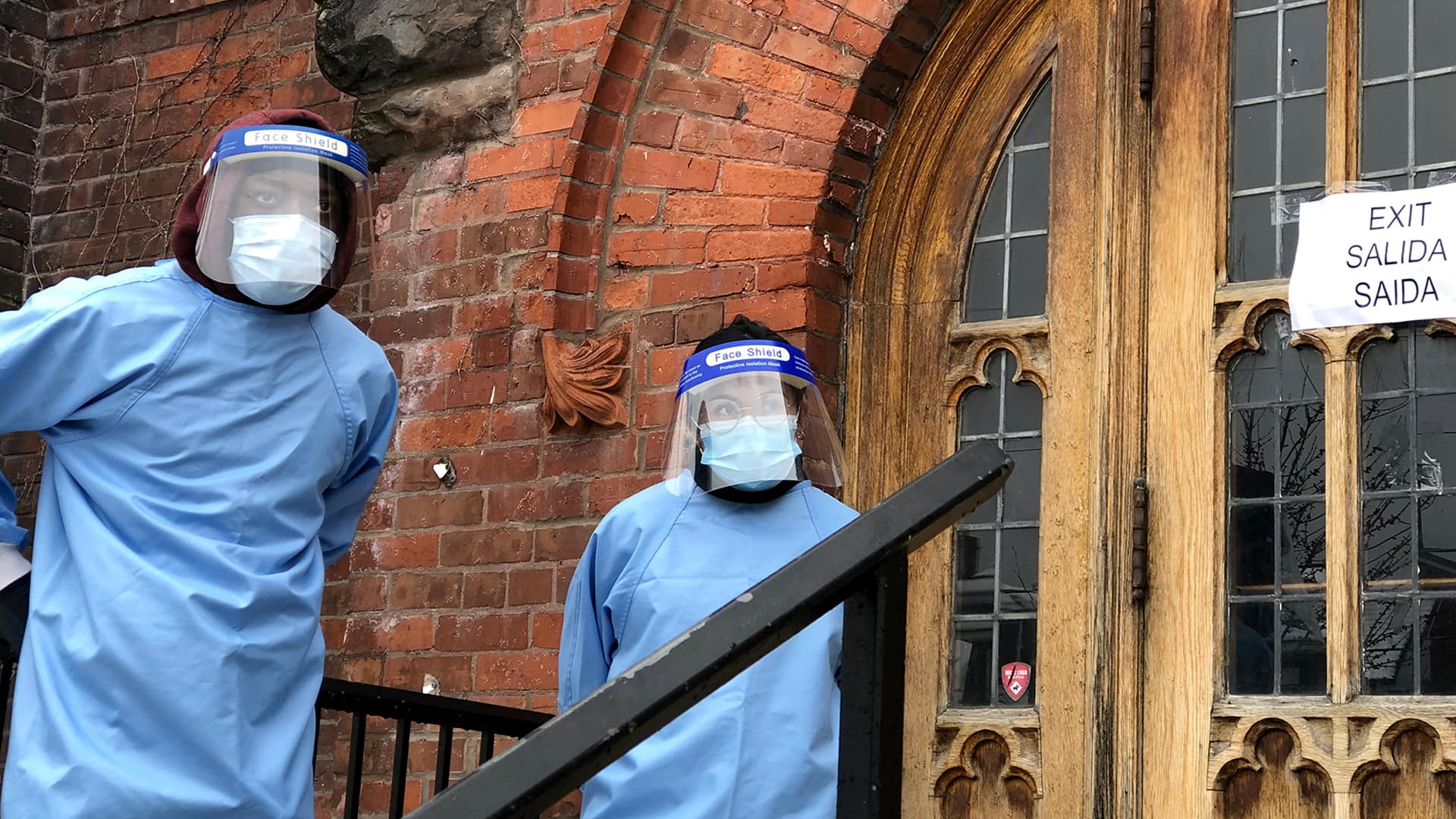As COVID-19 vaccination appointments book up five days in advance in some parts of Ontario, many people are surprised to learn that an estimated one-third of long-term care workers — who have been eligible since December — have not yet gotten their shots.
According to a memo from the Ontario Ministry of Long Term Care dated March 8, an estimated 67 per cent of staff in nursing homes across the province have received at least one dose of a COVID vaccine, compared to over 95 per cent of residents.
It’s not clear how many of those workers haven’t been vaccinated due to logistical issues, such as not being able to get into a COVID immunization clinic, versus how many are reluctant to get the shot at all.
Just like in the broader Canadian population, vaccine hesitancy exists among long-term care workers — and the reasons are varied and complex, experts say.
They range from confusing public health messaging about vaccines that are brand new, to a lack of access to someone who can address their concerns and questions without judgment, to economic factors, experts said.
The fact many long-term care workers don’t get paid sick time is the “number one reason” some haven’t yet been vaccinated, said Sharleen Stewart, president of SEIU Healthcare, a union representing staff in many of Ontario’s long-term care homes.
Fear of missed shifts
Many workers would like to consult with their primary care provider to address their questions or concerns about the vaccine, but if they take time to do that, they’ll be docked pay, said Stewart.
Additionally, some people experience tiredness or flu-like symptoms for a day or two after the second shot as their immune systems rev up. But without paid sick days, some workers are afraid to take that chance, she said.
“These very low-wage earners, predominantly women … they cannot afford to lose, you know, $200, $300 a paycheque by having to stay home for a couple of days to rest after their vaccination if they experience, you know, the minor side effect,” Stewart said.
Plus, in a profession made up of a diverse workforce, there can be cultural factors that shape attitudes to vaccines — as well as racially based mistreatment by the health-care system that fosters fear or distrust, said John Yip, CEO of Kensington Health, a not-for-profit organization in downtown Toronto that includes a 350-bed long-term care home.
“[It’s] the historical lived experience of these individuals that presents itself as hesitancy. But it’s more than hesitancy, it’s a mistrust of government. It’s the confusing array of information that we’re reading,” Yip said.
About 75 per cent of staff in Yip’s long-term care home have been vaccinated, he said. He’s confident that number will increase to at least 90 per cent — the facility’s normal staff uptake for the flu shot — but it’s a gradual process that requires “private hallway conversations” and a lot of listening.
In addition to answering staff questions about the COVID vaccine himself, Yip has a doctor on site he can call upon to address more complex medical concepts.
Plus, Kensington Health started a “champion” program, in which staff from different racial or cultural groups who have had the vaccine informally talk to co-workers — often in their own language — to listen to their concerns and help reassure them that the vaccine is safe.
The champions also help convey the overarching message that by getting the vaccine, they’re protecting the elderly residents in their care, Yip said.
Vaccine education group
But not all long-term care homes are providing that level of access to vaccine information for their staff or a safe space in which they can ask questions, said Krishana Sankar, a biologist and the science communication lead for COVID-19 Resources Canada, a group co-founded by researchers at the University of Toronto and McGill University.
Sankar is part of a team of about 30 doctors, nurses, pharmacists and scientists who volunteer to run an open Zoom meeting every night where anyone can ask questions or express their concerns and fears about the COVID-19 vaccine. It started in January, primarily as a resource for long-term care workers.

“What we realized is essentially there was no vaccine education program for people that accompanied the rollout [of the vaccine],” Sankar said. “And so with that obviously came a lot of hesitancy.”
“A lot of the workers from the long-term care homes, when they joined the Zoom calls … [they’d] received a sheet of information and whoever educated them essentially read off the sheet. So there was no space or place for discussion,” she said.
The fact that long-term care workers were, along with residents, the first group prioritized to get the vaccine in Ontario actually contributed to their hesitancy.
“We’ve had people say to us, you know, very directly, ‘I don’t want to be a guinea pig.'”
WATCH | Boosting vaccine confidence in COVID-19 hotspots:
As part of efforts to boost confidence in COVID-19 vaccines in Toronto’s coronavirus hotspots, grassroots community campaigns and local leaders are helping deliver information and break down barriers. 9:00
What helped, Sankar said, was explaining the clinical trial process so long-term care workers understood that thousands of people had received the vaccine before them, and it was proven to be safe and effective.
“Essentially everyone has the same questions,” she said.
‘We need to catch up’
Long-term care workers, like everyone else, want to know whether they can trust the COVID-19 vaccines given how quickly they were developed (the answer is yes, because no steps were skipped — and the rapid progression through the steps was thanks to unprecedented global collaboration and government funding).
Many also have questions about how the Pfizer-BioNTech and Moderna mRNA vaccines worked and whether or not they could affect their DNA (the answer is no, they can’t).
Like Yip, Sankar said some people from different racial and cultural backgrounds also felt hesitant because of past mistreatment fuelling distrust in health-care institutions and therefore the vaccine.

In those cases, it’s often helpful to discuss what percentage of people from their racial background participated in the clinical trials to show they were represented and help build confidence in the vaccine, she said.
But the most important element to combating vaccine hesitancy, including among long-term care workers, Sankar said, is to make sure people know they’re in a safe space to ask any question or raise any concern and that they’re being heard in a respectful way.
“People have valid concerns,” she said. “It’s as though you’re wiping away their experiences [if you don’t listen].”
If people don’t get the information they need on a relevant level, that can drive them to anti-vaccination misinformation, Sankar said.
“I think this is something that a lot of conspiracy theorists or people who peddle misinformation have got down really well and something that the scientific and medical communities have been behind on,” she said.
“We need to catch up with that in the way in which we communicate to people so that they can understand we are here for them. We’re not here to tell you what to do but we are here to empower you to make the best decision for yourself.”
Part of helping people make that decision is talking them through the relative risks. Although they’re worrying about risks of getting the vaccine, for which adverse effects are extremely rare, the risks of getting COVID-19 are much higher.
As the COVID-19 vaccine continues to roll out to more people, nursing home operators are hopeful that vaccine hesitancy will decrease among staff, according to the Ontario Long Term Care Association.

“We are confident that with more education that demonstrates that it is safe and effective the [vaccine] program will be successful,” said Donna Duncan, the association’s CEO, in an emailed statement.
“Education campaigns must include engaging institutions our staff trust including through their faith communities, peer-to-peer communications and its availability in different languages. We look forward to seeing the impact of efforts underway as they reach more staff.”






